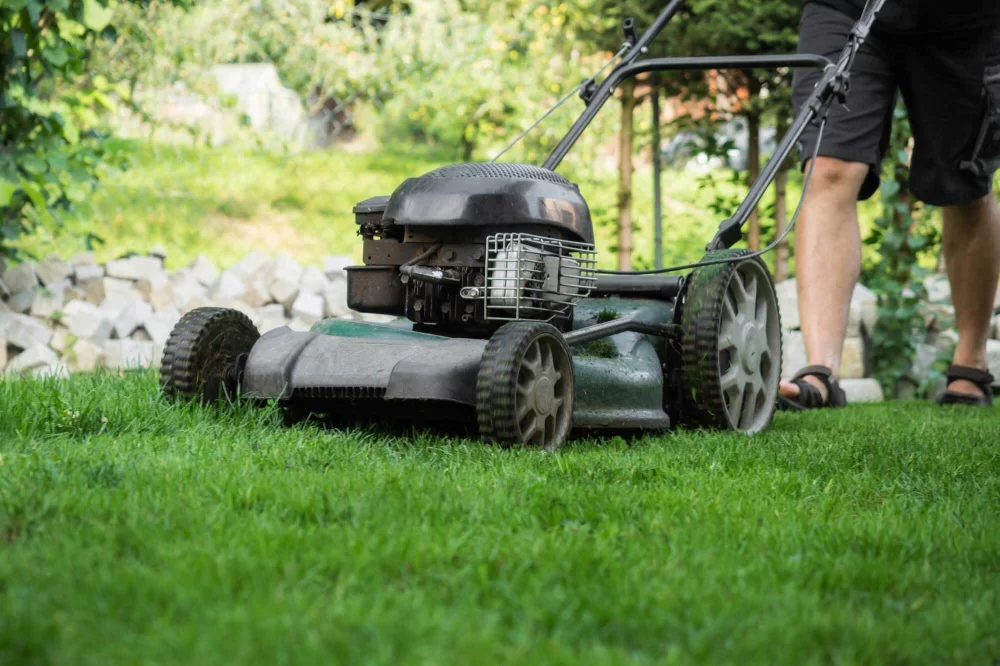
Understanding the Impact of Extreme Weather on Your Lawn
As a homeowner, I've often found myself worrying about the health of my lawn during extreme weather events. From scorching heatwaves in the summer to unexpected snowstorms in the winter, Mother Nature has a way of testing the resilience of our lawns. Extreme weather can wreak havoc on your grass, leading to issues like dried-out patches, fungal diseases, and erosion. But the good news is, with the right knowledge and care, you can protect your lawn and keep it looking lush, green, and healthy no matter the weather conditions.
Types of Extreme Weather That Affect Your Lawn
There are several types of extreme weather that can harm your lawn. Each one presents a unique challenge, but knowing how to prepare and protect your grass is the key to minimizing damage. Here are some common weather conditions that can affect your lawn:
- Heatwaves: Prolonged periods of high temperatures can stress your lawn, leading to dehydration, brown patches, and even grass death.
- Drought: A lack of rain can leave your lawn dry and brown. Grass needs water to thrive, and in dry conditions, it’s easy for it to suffer.
- Heavy Rainfall and Flooding: Excessive water can drown your lawn, leading to soil erosion and root rot.
- Winter Snow and Freezing: While snow can protect your lawn from freezing, prolonged cold without proper care can cause damage to your grass and roots.
Practical Tips to Protect Your Lawn from Extreme Heat and Drought
During the summer, my lawn is often exposed to high heat and dry conditions, which can be a real challenge for keeping it healthy. Over the years, I've learned a few tricks to protect my grass during extreme heat, and these tips can work for you as well:
1. Water Smartly
One of the most important things you can do during a drought or heatwave is to water your lawn properly. Deep watering is better than frequent shallow watering because it encourages your grass to develop deeper roots. Water early in the morning or late in the evening to minimize evaporation and give your grass the moisture it needs to survive the heat.
2. Choose Drought-Resistant Grass Varieties
If you're planting a new lawn or re-seeding, consider choosing grass varieties that are more resistant to drought. Fescue and buffalo grass, for example, are known for their ability to thrive in hot, dry conditions. These grasses will require less water and maintenance, saving you time and effort while keeping your lawn looking great.
3. Keep Your Grass Long
Longer grass provides shade for the soil and helps retain moisture. By leaving your grass a little taller, you can protect it from the sun's intense heat. I always try to mow my lawn at a higher setting during the summer months to reduce stress on the grass.
4. Mulch Your Lawn
Mulching around your lawn can help keep the soil cool and reduce water evaporation. It’s a simple yet effective way to protect your grass from heat stress. Organic mulches, such as straw or wood chips, also add nutrients back into the soil over time.
How to Protect Your Lawn During Heavy Rain and Flooding
Heavy rain and flooding are other weather events that can cause significant damage to your lawn. While it’s impossible to control the weather, there are steps you can take to minimize the damage caused by excessive rainfall:
1. Improve Drainage
If your lawn is prone to flooding, improving the drainage is a must. Installing French drains, creating berms, or adding gravel to certain areas can help water flow away from your lawn, preventing pooling and waterlogging.
2. Aerate Your Lawn
Aerating your lawn allows water to penetrate the soil more effectively and reduces the risk of waterlogging. By creating small holes in the ground, you allow oxygen to reach the roots, which is vital for your grass’s health. Aerating is especially important after heavy rain or in areas where the soil is compacted.
3. Avoid Mowing After Rain
After a heavy rainstorm, I always wait until my lawn is dry before mowing. Mowing a wet lawn can damage the grass, and the mower wheels can leave ruts in the soil, which can contribute to water pooling.
Winter Care: Protecting Your Lawn from Snow and Freezing Temperatures
Winter can be tough on your lawn, but there are still steps you can take to ensure it survives the cold months and comes back strong in the spring. Here’s how I protect my lawn during the winter:
1. Keep It Clean
During the winter months, fallen leaves and debris can suffocate the grass, preventing it from getting the oxygen it needs. Make sure to rake up leaves and remove any other debris from your lawn before the snow falls.
2. Limit Foot Traffic
Heavy foot traffic on frozen grass can damage the blades and compact the soil. I make sure to avoid walking on my lawn during freezing weather to prevent long-term damage.
3. Use Salt Sparingly
If you’re using salt to melt ice on your driveway or sidewalks, be cautious. Salt can seep into the soil and damage your lawn. Consider using sand or a salt-free ice melter around your lawn’s perimeter.
Professional Lawn Care Services to the Rescue
Despite all of these tips and tricks, sometimes it’s best to call in the professionals. Lawn care experts can assess your lawn's unique needs and provide treatments to ensure it thrives, no matter what the weather throws at it. From irrigation systems to fertilization and aeration, professional lawn care services can make a huge difference in maintaining a healthy lawn throughout the year.
For the best results, consider reaching out to a lawn care service provider in your area to ensure your lawn is always protected, no matter the season. With the right knowledge and support, you can keep your lawn green, healthy, and beautiful, no matter what the weather throws your way!








